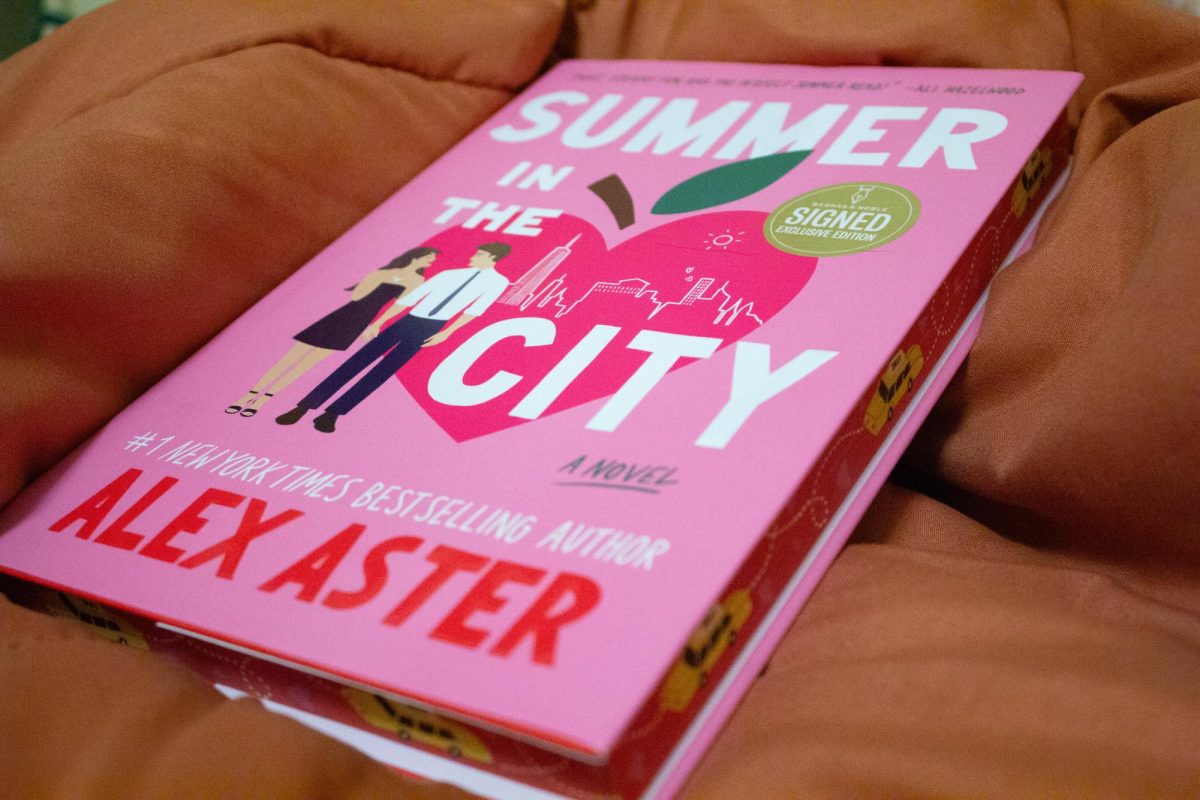“Nandor Fodor and the Talking Mongoose” immediately caught my eye from the title alone. I was scrolling through a list of movies coming soon to video on demand, and I slammed on the brakes as soon as I read that title. My interest was further peaked when I noticed Simon Pegg, one of my favorite actors, on the attached YouTube trailer thumbnail. Together, those two elements were enough to convince me I needed to watch this movie.
“Nandor Fodor” was initially released in select US cinemas on September 1 and became available to rent or buy from services such as Amazon Prime, YouTube and Apple TV by September 19. I’m not sure how it passed as far under the radar as it did with recognizable names attached such as Pegg, Minnie Driver and Christopher Lloyd, but that VOD list was the first place I’d heard about it.
The plot of the film is relatively simple. Dr. Nandor Fodor (Pegg) is a paranormal psychologist. A colleague (Lloyd) calls upon him to investigate a family who claims to be hosting an omniscient, talking mongoose. The creature, known as Gef, has a reputation for disappearing frequently, making it difficult to determine his legitimacy. Intrigued by the prospect, Fodor and his assistant Anne (Driver) venture out to the family’s farm. Along the course of the investigation, however, Fodor’s beliefs are put to the test, and he is forced to face the elements of his past haunting him.
On paper, this all sounds great to me: great title, great premise and great cast. However, despite an outlandish plot ripe with potential and a cast brimming with the talent to execute it, the film mostly comes across as stale, lackluster or even plain boring at times.
The majority of the problem comes down to pacing. The film is one hour and thirty six minutes long, the standard for a comedy. It provides just enough time to get in, be funny and get out before the bit gets old. However, “Nandor Fodor” seems unsure what to do with all this time, dragging itself out to feature length just for the sake of it. The beginning is incredibly slow and exposition-heavy; it’s just people talking in different settings. First, Pegg’s talking to a reporter, now he’s talking to Minnie Driver, now he’s talking to Christopher Lloyd, etc. He doesn’t even reach the farm until forty minutes into the movie, nearly halfway through. Even after his arrival, the pace stays nearly the same. the group looks for Gef here, the group looks for Gef there, someone talks about Gef in the pub, someone else talks about Gef on a walk and so on.
The most egregious waste of space was Pegg’s journey to the farm, during which time he reads the journal entries Christopher Lloyd gave him on his investigation of Gef, which are shown in flashbacks. This section goes on for six or seven minutes which, for sanity’s sake, is ludicrous for a movie. It’s just a big info dump, some of which we’ve already been told, and most of which never matters.
The film picks up at the end where, instead of having one meaningful scene and then ten minutes of garbage to pad out time afterwards, it’s one necessary and funny scene after another.
The theme explored over the course of the movie is clever, dealing with the nature of belief. However, the theme often works against itself and contributes greatly to the film’s poor pace. A well known rule of movie making is the importance of “showing, not telling,” in order to provide interesting visuals. Now, I love dialogue-heavy things but there does need to be some action to break it up. There can’t just be an hour and a half long conversation. The problem with “Nandor Fodor” is that it revolves around an idea that, by its nature, is told rather than shown. No one ever sees Gef, they only hear him, which creates the dilemma of whether or not he’s real or an attempt from the host family to trick people and draw in a crowd.
When the main plot point of your movie is that something can’t be shown, you run the risk of ending up with a bunch of scenes where people are just sitting around talking, which is exactly what happens here. There’s only so much investigation that can be conducted on whether or not he’s real, so once that well is dried up, it’s right back to more drawn out conversations. It’s a concept that comes with a major challenge, and I don’t think the filmmakers were prepared to tackle it, or, at least, they didn’t tackle it well.
The performances are the biggest saving grace for this movie. Pegg and Driver are excellent in their roles. They have a great dynamic together, one of this pompous doctor and his grounding assistant. During the sporadic comedic elements of the film, they both hit their marks well, consistent with the talents they’ve displayed in other projects. The best performance comes from Pegg’s scene in the jail cell. It’s always a treat to see him go to a more serious or dramatic place; though it’s uncommon for him, Pegg nails these serious performances each time. That scene alone absolutely raised my overall impression of the movie. It was excellent.
I absolutely adore Chistopher Lloyd. I love “Back to the Future” and have extremely fond memories of watching it as a kid. Despite this love, I could tell he was struggling a little bit. Some sections were stronger than others, but the scenes where he was talking with Pegg in the bar came across as a bit straining for him. I was glad to see him and think his presence speaks to his love for making movies, as he certainly didn’t need to be.
I don’t think “Nandor Fodor” is terrible. It has fantastic actors and actresses behind it and a unique concept, but the execution stops me from wholeheartedly recommending it. Maybe wait until it comes to streaming for free and then, if you’ve got some time on your hands, give it a watch. I don’t think it’s something that warrants revisits, but it’s an interesting first time watch.





